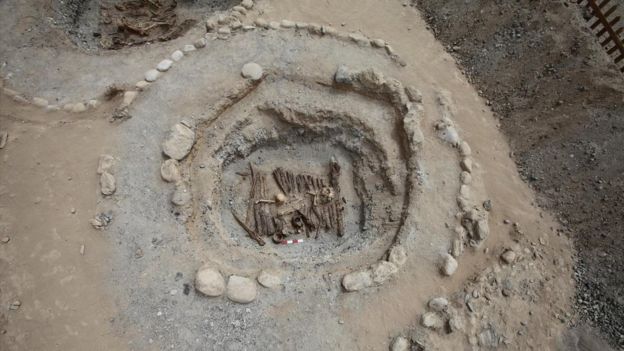Everything Old is New Again
"We've known that cannabis is one of the oldest cultivated plants in East Asia, primarily for making oil and hemp."
"Now we know the ancients also valued the plant for its psychoactive properties."
"[The plant was placed there] to probably allow this man to use this to go into the spirit world."
"There is a very deep history of a relationship between cannabis and humans for many uses -- fibre, seed, oil, food, medicine and psychoactive or spiritual or other uses."
Mark Merlin, botany professor, University of Hawaii, Manoa
"[The location of those artifacts suggests cannabis smoke was] being used during funeral rituals, possibly to communicate with nature or spirits or deceased people, accompanied by music."
"[The findings are consistent with what's known about cannabis use across Central Eurasia], possibly reflecting some kind of community of shared beliefs in the Eurasian mountain foothills."
Yimin Yang, archaeologist, University of Chinese Academy of Sciences
 |
Scientists exhumed 10 wooden braziers from eight tombs
at the ancient Jirzankal Cemetery in what is now western China. Many of
the braziers held stones that were apparently heated and used to burn
cannabis plants.
|
Cannabis is no relatively recent plant known for its mind-bending properties as well as for pain relief. The use of this plant as a substance whose properties lend to mind-altering experiences is assumed to be at least 2,500 years old in human experience and use. A new study just published in the journal Science Advances whose conclusions are based on the chemical analysis of residues discovered in a western China burial site by archaeologists identify a substance whose charred remains were found in wooden braziers, as cannabis.
In the 5th Century B.C., the Greek historian Herodotus wrote of people in Central Asia who burned the plant, inhaling the resulting smoke within tent-like structures as ceremonial procedures during burial ceremonies. He appeared to find the ritual he described similar to what he had witnessed in Greek bathhouses. Evidently the cannabis plant was used back in ancient times just as incense is used now in many Asian ceremonies, the smoke meant to be inhaled, part of a tradition of spiritual practices.
Cannabis residue the archaeologists found at the western China site was located in wood containers or braziers holding stones that conceivably were heated to create smoke from plant material which laboratory tests identified to be cannabis with higher levels of the psychoactive ingredient THC than most wild varieties of the plant naturally contain. Which led to conjecture whether people of the time cultivated the plants to breed them for their higher THC properties or had simply come across rare varieties of the plant containing greater amounts of the chemical.
According to Robert Spengler, a scientist at the Max Planck Institute for the Study of Human History in Jena, Germany, and a co-author of the paper, "a solid, unequivocal data point for actual use of this plant as a drug" was derived from the research. That this was ceremonially conducted during a burial led the researchers to believe the ceremony participants made use of cannabis "to communicate with nature, or spirits or deceased people", concluded Yimin Yang, the paper's senior author.
Much further away in northern China at yet another burial site, a kilogram of chopped cannabis was discovered adjacent to the head of a man buried in a cemetery which dated to roughly the same period. According to Dr. Spengler, there were two phases of cannabis domestication; first it was cultivated in eastern China some 3,500 years ago, valued as a source of fibre, oil and food, the wild plant having very low THC content. No evidence exists that the earlier domestication was linked to inhalation of the smoke.
The site in Western China, however, indicates that people had by then discovered and valued yet another feature of cannabis; the presence of tetrahydrocannabinol (THC). Archaeologists had excavated eight tombs in a burial site called Jirzankal Cemetery, in the Pamir Mountains of western China in 2013, where four stones were found with burn markings. When the material was examined through a chemical analysis known as gas chromatography -- mass spectrometry (GC-MS) the presence of cannabis with relatively high levels of THC was revealed.
 |
| Tomb M12, where the wooden burner was found Photo: Xinhua Wu |
Labels: Archaeology, Cannabis, Ceremonial Burials, China

0 Comments:
Post a Comment
<< Home